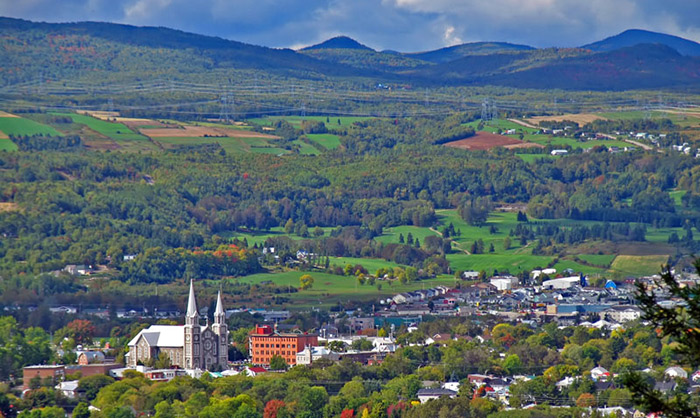BROME LAKE BOOKS / THE BOOKSTORE
“You feel you’re letting down a friend,” said Reine-Marie.
“Partly, but I run a bookstore,” said Myrna, looking at the row upon row of books, lining the walls and creating corridors in the open space. (The Nature of the Beast, Chapter 4)
Founded in 1998, Brome Lake Books is a little village bookstore with a lovingly curated collection of new titles and old favorites for the discerning booklover. Local authors and books on the area are featured in their own section. A special area in the bargain basement is dedicated to raising money for the community hospital through second hand book sales. Wooden shelves made by a local craftsman line the walls. Lower units in the middle of the room are fitted with casters for smooth movement along the hardwood floors (you do have to be prepared for those impromptu dance parties). Large bay windows overlook the park and the river in the heart of the loyalist village of Knowlton.
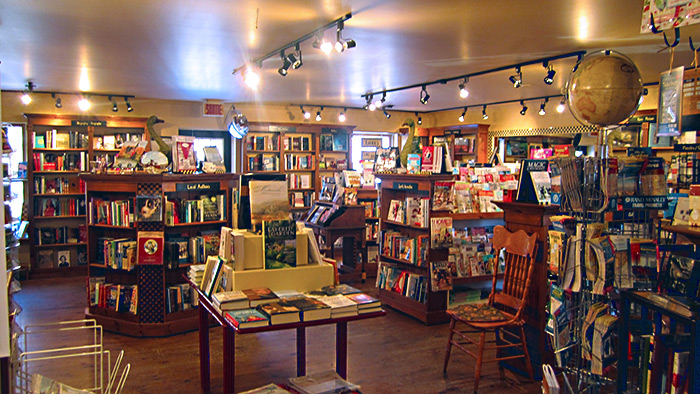
A reading area is dedicated to Louise Penny with a little wood stove and a mantle above to display Louise’s books, Three Pines café-au-lait mugs and a decanter of licorice pipes. On the wall is a framed copy of the Three Pines Inspirational map. A braided rug made by a friend’s mother with two cozy arm chairs and a little coffee table complete the area. Lining the top of the bookshelves are samples of Louise Penny’s books in various languages.
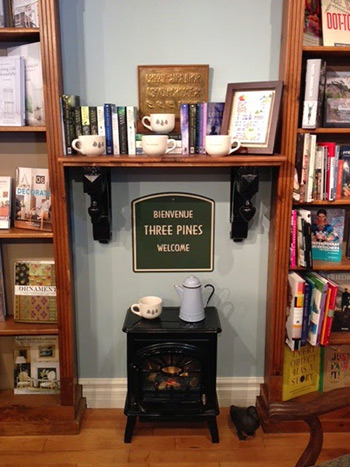 Owners, husband and wife, Lucy Hoblyn and Danny McAuley may be found puttering around the store on most days. Daily they walk to work with their three year old Portuguese sheepdog, Watson, or the big hairy carpet as he is often called. Watson is the official greeter at Brome Lake Books and he has many friends that stop by for a friendly wag. Their three boys Angus (age 18), Adam (age 15) and Benjamin (age 9) have all grown up with the bookstore and have inherited a love of reading; the very best gift a parent can give.
Owners, husband and wife, Lucy Hoblyn and Danny McAuley may be found puttering around the store on most days. Daily they walk to work with their three year old Portuguese sheepdog, Watson, or the big hairy carpet as he is often called. Watson is the official greeter at Brome Lake Books and he has many friends that stop by for a friendly wag. Their three boys Angus (age 18), Adam (age 15) and Benjamin (age 9) have all grown up with the bookstore and have inherited a love of reading; the very best gift a parent can give.
Last April, Brome Lake Books moved into the next door building and were overwhelmed by all the generous help that they received. Thirty friends, neighbors and customers turned up to carry boxes and boxes of books and heavy shelves. A book club prepared a sumptuous picnic lunch for all to share. One of the happy helpers was none other than Louise Penny herself. Everyone was smiling and jovial then someone starting singing their A,B,C’s as it helped put the books in alphabetical order. It was a very Three Pines day.
One of the great pleasures at Brome Lake Books is having the chance to meet and correspond with the many fans of Louise Penny. Whether it be Arleen from Texas, Diana from Nova Scotia or Andrea from Australia, Louise always has the best fans. Louise inspires us to be kind, caring and thoughtful people. Her books are more about love and community than murder; more about art, poetry and food than crime. More about living than dying. Vive Gamache, Vive Louise!
“So often, a visit to a bookshop has cheered me, and reminded me that there are good things in the world.” ― Vincent van Gogh
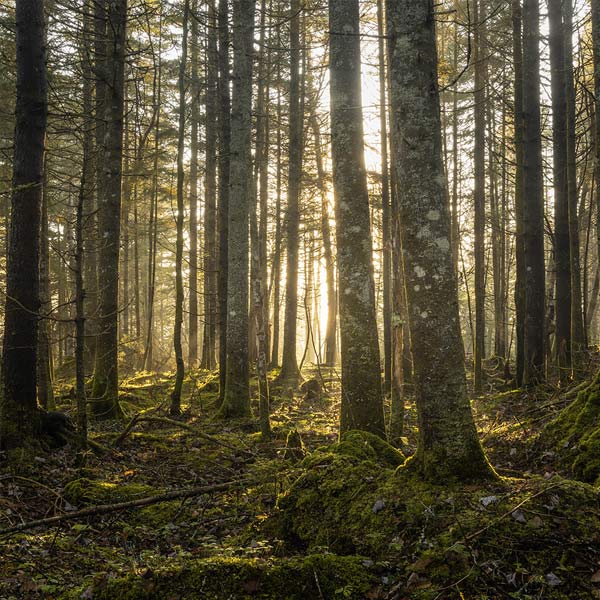
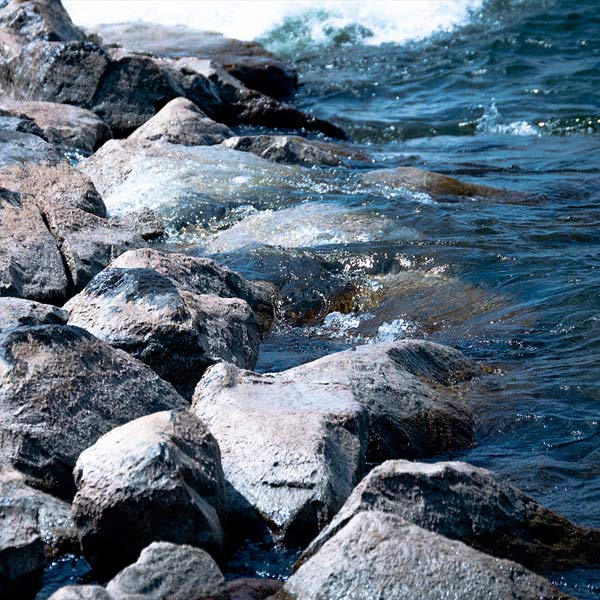
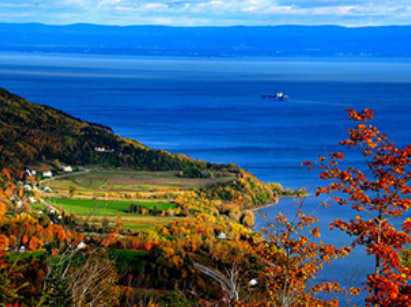 The dot had a name. Baie-Saint-Paul.
The dot had a name. Baie-Saint-Paul.